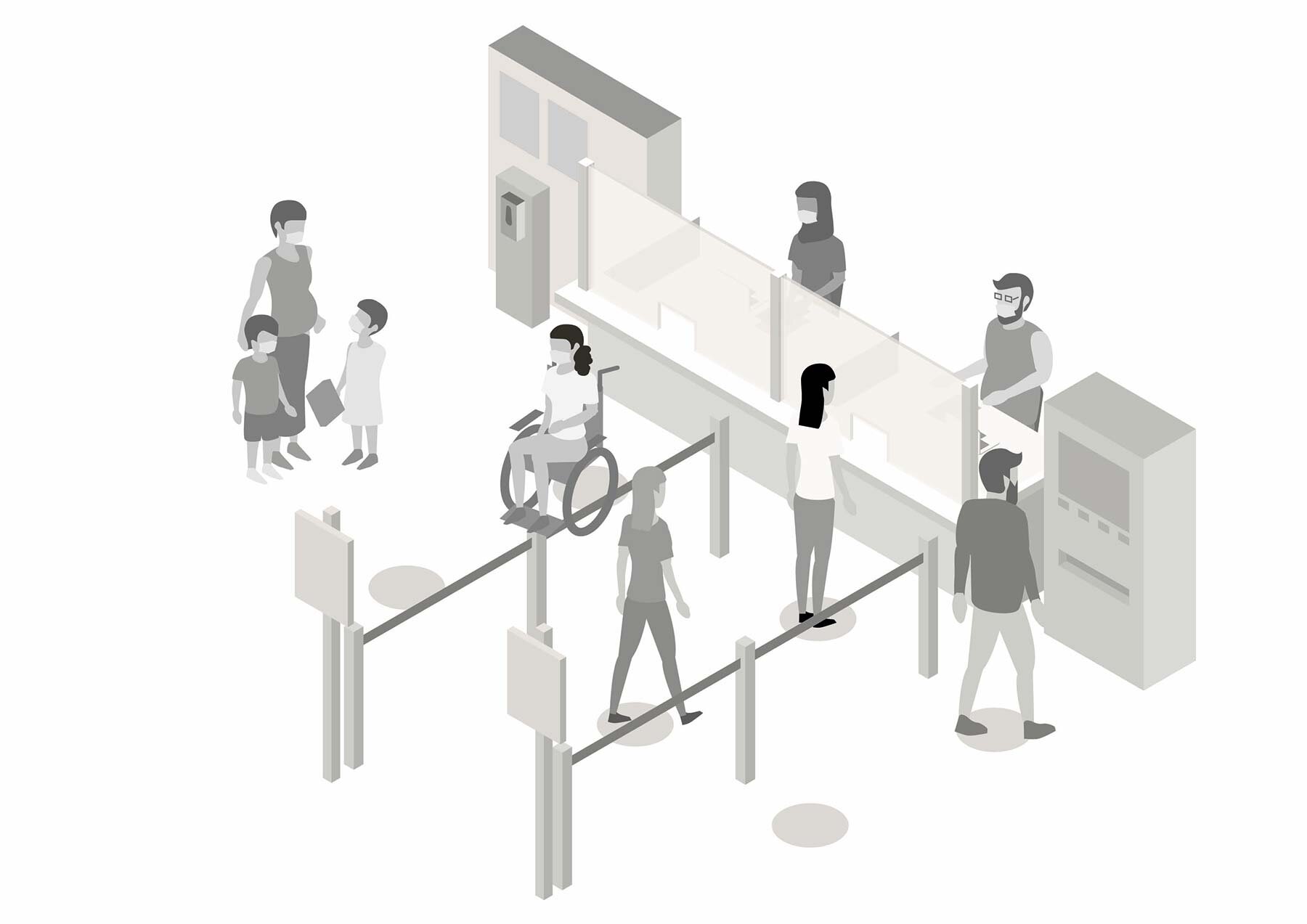Finding our way in a new world
by Jade French
How do maps and signs help us navigate the current COVID-19 crisis? Applied Wayfinding, an urban planning and graphic design studio, has released a new toolkit to answer just that need.
The Toolkit is designed to help anyone who is responsible for places where the public go: from cities, universities, transport systems to individual stores, theatres, restaurants and offices.
‘Wayfinding’ is defined as an urban user experience that provides information systems to guide us through our physical environments. As the COVID-19 pandemic continues, it is imperative that citizens are speaking the same design language.
A new open-access COVID-19 Design Toolkit, created by urban planning and graphic design studio Applied Wayfinding, includes a set of guidelines, icons and templates on how to design systems for high-traffic spaces and encourage safer public behaviours in response to the pandemic.
As the team puts it: “One terrible advantage of a virus is its imperceptibility, it only exists as a story we are being told”. To help those responsible for public spaces tell a better story, the kit is available to download and use straight away.
The package includes a universal set of signs and icons that are royalty-free and customisable, priced only to cover the costs of producing them. The open-access nature of the kit speaks to the ways in which communities are coming together. Offering ready-to-use images means you can download, tweak and use the kit instantly to be in dialogue with other spaces, while still communicating the same fundamental, clear messages.
Tim Fendley, Founder & Partner of Applied Wayfinding, notes that a major part of tackling the virus is by avoiding contact with each other. “Yet this is the opposite of how we act as humans. Our behaviour is conditioned by instinct and habit—no matter how much we desire to change our behaviour, our habits kick in.”
He believes that one of the few ways to change those habits is to arrest people's behaviour in the moment. “This means placing information and reminders all around us as we travel through places. This can be really effective and has been a much-underused tool in the fight against COVID-19.
Tim explains: “Brands do not need to stay up-to-date. They are better served by working hard to create COVID-safe places. By guiding people to behave safer, their audiences will have more confidence to travel and engage with the places where brands operate."
A new coordinated approach is designed to help and reassure the public, to help citizens around the world avoid further lockdowns and enjoy greater freedoms while staying safe.
Design-led COVID-19 comms will be hugely important in the coming year as brands and businesses factor the pandemic into their marketing and content strategies. Government signage has filled a gap but as we prepare for more guidelines on social distancing, health and safety and public health, businesses will want to put their own brand voice into the messaging; think custom signage that is in keeping with their own brand and copy to match.
At the same time, we need to be in dialogue with each other to make sure the public responds to cohesive and safe messaging. It’s a tricky balance to strike but with tools such as Applied Wayfinding’s innovative toolkit, we can start to imagine what that might look like.
Do you find it hard to tell your own story? Contact ALHAUS for the brand storytelling support you need to thrive both in and outside of a crisis.



